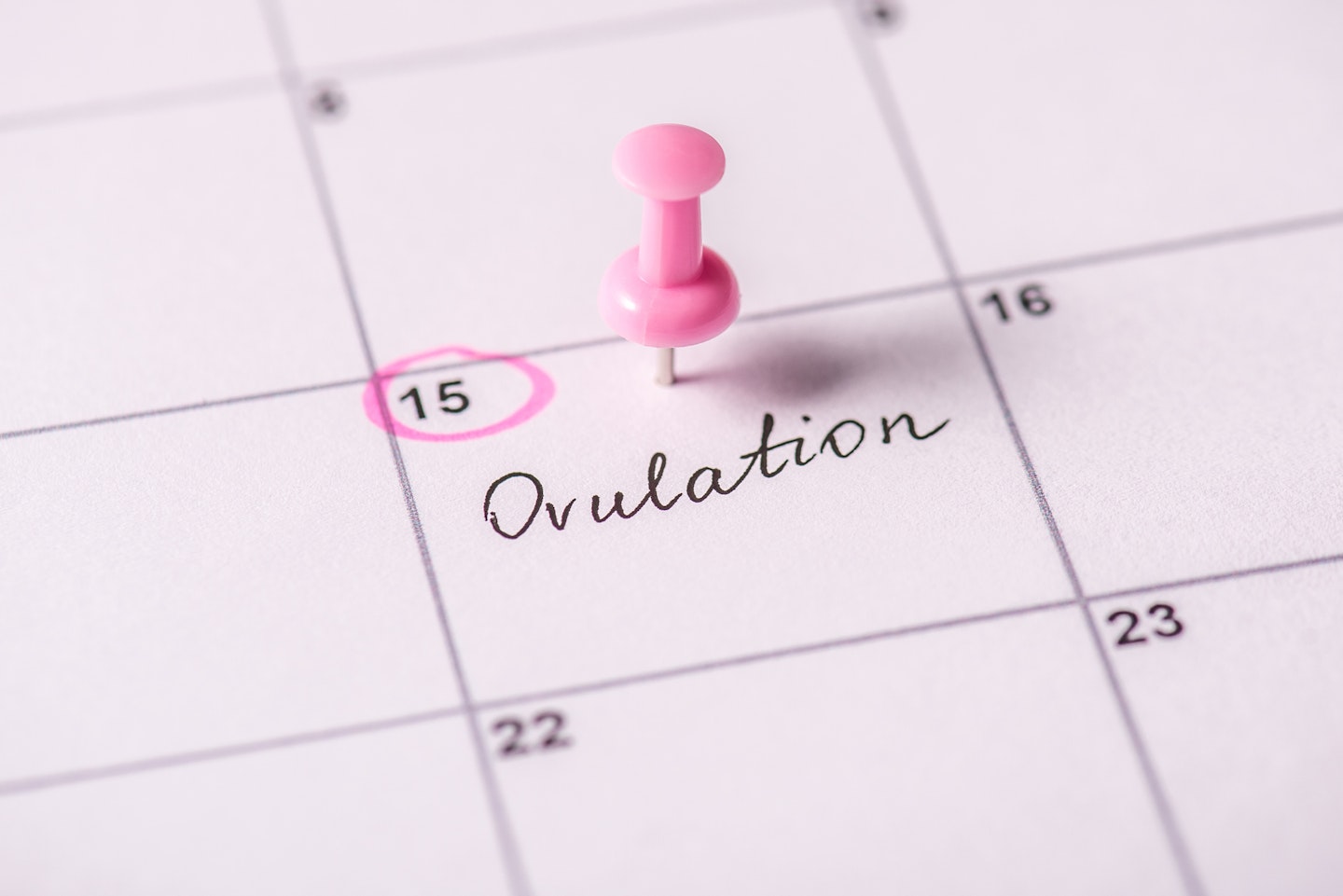Medically Reviewed by: Sandy Christiansen
If you’ve experienced bleeding between your regular periods, you’re probably wondering if it’s anything to worry about. One possibility is that it’s ovulation bleeding.
But what is ovulation bleeding? And what does it mean? The good news is that it’s usually nothing to worry about. As with so many changes in the body during your menstrual cycle and pregnancy, it's likely to be caused by hormonal fluctuations. We spoke to Sandy Christiansen, Lead Fertility Coach & Clinical Embryologist at Béa Fertility to get the answers to your questions around ovulation bleeding. Read on to discover why you might see blood during ovulation and what it means if you're trying to conceive.
What is ovulation bleeding?
Ovulation bleeding or ovulation spotting as it’s sometimes referred to, is a light bleed that occurs around the time of ovulation each month, when the ovaries release an egg. Typically, it only lasts for a day or two.
Ovulation bleeding occurs usually at the same time your body ovulates, anywhere between 11 and 21 days after the first day of your last period, depending on the length of your cycle. Like your period, the timing of ovulation can vary cycle-to-cycle, and you may have the odd cycle where you don't ovulate at all.
Usually, the light spotting will be pinker in colour. This pink discharge is a sign that the blood is mixed with cervical fluid which women usually produce more of during ovulation.
Is it normal to bleed during ovulation?
Bleeding during ovulation isn't very common but it’s usually not a cause for concern and can be considered normal for some women. If you spot bleeding during ovulation it's likely to just be a little blood mixed with the cervical mucus your body produces more of when you ovulate.

Does bleeding during ovulation mean I'm pregnant?
Ovulation spotting can sometimes get mixed up with implantation bleeding. While ovulation spotting happens during ovulation, implantation bleeding occurs when a fertilised egg attaches itself to the lining of the uterus which according to the NHS takes place around 5-6 days after ovulation and can be one of the very early signs of pregnancy.
Why does ovulation bleeding happen?
As Sandy Christiansen explains, ovulation bleeding only tends to happen in around five percent of women, according to a study in the American Journal of Epidemiology. The bleeding can happen due to minor bleeding from the ruptured follicle when the egg is released or from sudden hormonal fluctuations during ovulation. It’s commonly caused by low estrogen and high levels or progesterone.
The good news, if you're trying for a baby, is it doesn’t impact your chances of conceiving.
If you’re concerned about the occasional bleed between periods, it’s always important to get this checked with your GP, especially if it's accompanied by other symptoms such as cramping, heavy bleeding, or bleeding that lasts for more than a few days.
Signs and symptoms of ovulation
The symptoms of ovulation are different for every woman. Some women are able to tell if they are ovulating through symptoms such as changes in cervical mucus, mood changes or increased libido. As well as using an ovulation calculator, there are a number of ways to track your ovulation.
• Ovulation predictor tests - These work similar to pregnancy tests in that you pop a strip into your pee to find out if you’re ovulating or not.
• Fertility apps - There are a number of fertility apps that can track your menstrual cycles and discharge changes throughout the month.
• Basal body temperature test - You can buy special Basal thermometers which are used to track your temperature each morning. A rise in basal body temperature can indicate that ovulation has taken place.
• Cervical mucus tracking - As you get close to ovulation, changes in oestrogen levels can make your cervical mucus more wet and slippery, similar to raw egg whites.
• Saliva ferning test - This is a type of test that uses a microscope to test your saliva. In some women, dried saliva may form a fern-shaped pattern, indicating that ovulation is close.

What if I'm experiencing ovulation pain?
As former midwife, Rachel Fitz-Desogher notes, ovulation pain can feel like a “stitch-like” pain on one side of the abdomen or the other, or at the very bottom of the tummy when ovulating. Known as Mittelschmertz, this pain is nothing to be concerned about. Ovulation pain can last just a few minutes or continue for a day or two, and some women may notice a little vaginal bleeding when it happens too.
Other reasons you might be bleeding in the middle of your cycle
If you're bleeding in the middle of your cycle, it could also be due to reasons other than ovulation. Some of these reasons include:
Anovulation: This is when an egg is not released from your ovary during your menstrual cycle. It can happen occasionally or many times in a row and can be linked to irregular bleeding.
Endometriosis: This condition causes tissue, similar to the lining of the womb, to grow outside the uterus. It can cause irregular periods and heavy bleeding and may be a reason for bleeding in the middle of your cycle.
Hormone treatments: If you're on birth control pills, you might experience some light spotting at odd times in your cycle, especially if you've come off the pill or have just started it.
Infection: Infections, particularly STIs, can cause the cervical tissue to become inflamed and bleed.
Fibroids: These non-cancerous growths develop around the womb and can cause bleeding, pain and other complications.
Ectopic Pregnancy: An ectopic pregnancy is when a fertilised egg implants itself outside of the womb – often in one of the fallopian tubes. If you've missed a period and have other symptoms as outlined by the NHS, along with mid-cycle bleeding, contact your doctor.
When should you worry about ovulation bleeding?
In most cases, bleeding while ovulating is not a cause for concern. However, if this type of bleeding is unusual for you, or is heavier than usual or lasts for longer, speak to your GP. This is also the case if it's accompanied by other symptoms such as pelvic pain, dizziness or painful periods.
About the expert
Sandy Christiansen, MSc is an Embryologist and award-winning fertility coach with over a decade of experience working in fertility clinics around the world. She is a HCPC registered Clinical Scientist, ESHRE certified Clinical Embryologist and highly experienced fertility coach.
A journalist since 2015, Emily Gilbert is the Features & Reviews Editor for Mother&Baby and has written for the website and previously the magazine for seven years. Emily writes about everything from the top baby products to pregnancy, fertility and maternal mental health. Specialising in product reviews, Emily is the first to know about all the exciting new releases in the parenting industry.
